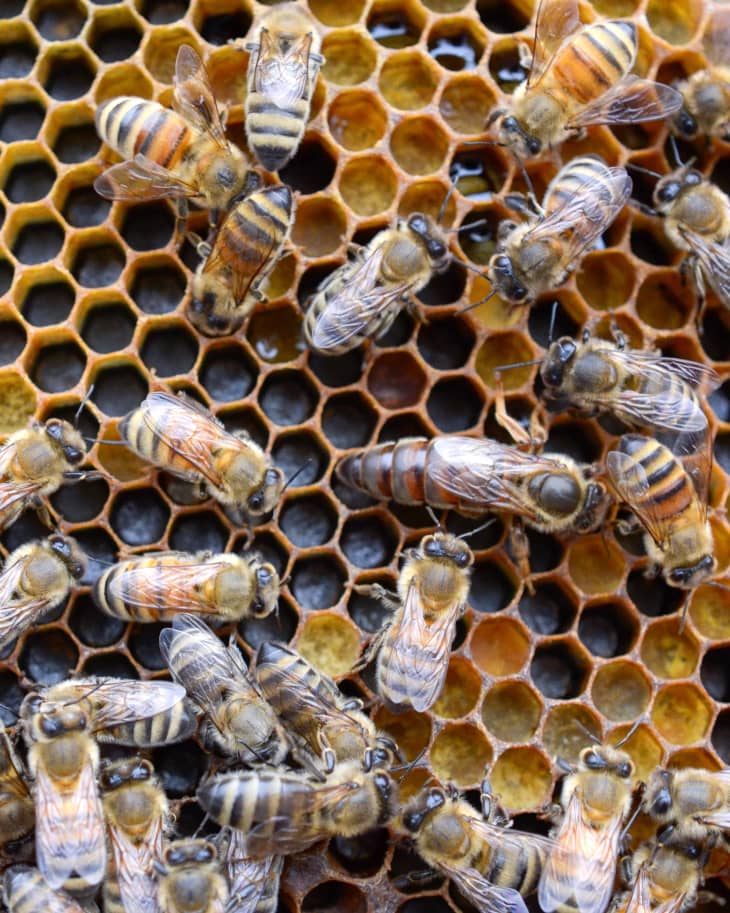The Science of How Bees Make Honey
Honey is one of those ingredients that nearly all of us consider a pantry staple. We use it liberally to sweeten anything from a cup of tea to a dressing for a chicken rice bowl. Bees play a crucial role in making honey, including an enzyme-catalyzed chemical reaction, so let’s explore how bees transform nectar into honey.
From Flower to Bee
Flowers produce a sweet nectar to attract pollinating insects, such as honey bees. The bee “drinks” that nectar (mostly sugars, including sucrose, but it may also contain glucose or fructose), which passes down the esophagus to the “honey sac,” where the nectar is stored until the bees return to the hive. While the bee slurps the nectar, the flower’s pollen sticks to its furry body, so as the bee travels from flower to flower, gathering more nectar at each stop, the bee is also cross-pollinating — transferring pollen from the previous flowers it visited to the next, picking up more pollen as it goes. This is one of the reasons why bees are so important to our ecosystem.
From Bee to Hive to Honeycomb
At the hive, bees regurgitate the nectar to pass it on to the worker bees. This step also concentrates the nectar, speeding up the evaporation of water. When the concentrated nectar is finally deposited as a thin film on the honeycomb, even more water is evaporated as the bees flap their wings. By the end, the nectar only contains about 20% water, which helps ward off bacteria and mold. An enzyme transforms some of the glucose in the honey to gluconic acid, thereby lowering the pH of the honey, again rendering the honey less friendly to bacteria and mold.
From Honeycomb to Honey
While you can buy honeycomb full of honey, most honey is sold in a jar. The honey is extracted from the honeycomb, centrifuging it and filtering it to separate the wax and other particles from the honey.
The Sweet Chemistry of Invert Sugars
Honey bees play an essential role in making honey, not only because they collect the nectar from flowers, but also because they produce enzymes that break down the carbohydrates in nectar. That reaction is catalyzed by a digestive enzyme the bees produce and occurs largely in the honey sac of bees. The enzymes secreted into the honey sac help break down starches in the nectar, as well as sucrose, forming glucose and fructose (also known as “invert sugars”). This transformation represents a major step in the production of honey because the resulting mixture of sugars is much sweeter than the nectar first collected.
In the kitchen, you actually perform a similar reaction when you add lemon juice to a saucepan of granulated sugar when you are making caramel. Just a splash of lemon juice will break down some of the sucrose in the granulated sugar and turn it into glucose and fructose (invert sugars), which in turn help prevent the crystallization of the rest of the melted granulated sugar in the pot, so your caramel will stay smooth. And if you don’t have lemon juice, you can also opt to add honey (a natural source of invert sugars) or corn syrup (which contains glucose and maltose).
What are your favorite ways to use honey?
